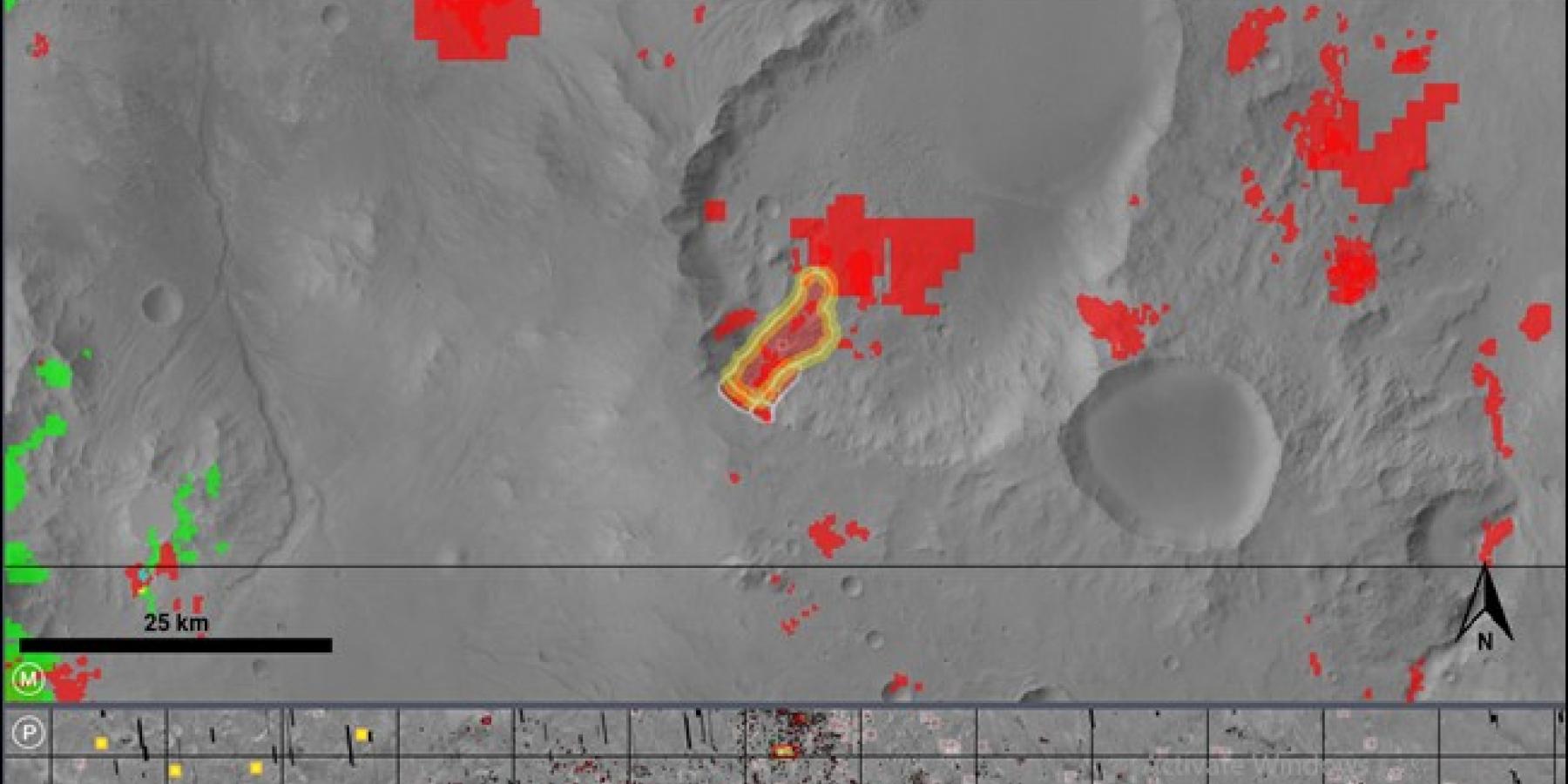
Alexander K. Stewart, USA (ret)
Long-runout landslides, though uncommon on Earth, are prevalent throughout the solar system and well-preserved on Mars due to low rates of erosion. Although mineral composition, specifically presence of clay minerals, has been found to be an important predictor variable in susceptibility models of highly mobile terrestrial landslides (Lee and Min, 2001; Van Den Eeckhaut et al., 2006; Yalcin, 2007), most studies of Martian landslides have not directly considered composition (Watkins et al., 2020). This project aims to better constrain composition, specifically the role of clay minerals, in long-runout landslides globally on Mars by determining broad regional correlations between the global distribution of clay minerals and the occurrence and morphology of long-runout landslides. The hydrous mineral database used for this study is obtained from global detections by the in-situ imaging spectrometers OMEGA and CRISM. OMEGA has lower spatial resolution and greater spatial coverage, while CRISM has greater spatial resolution and smaller spatial coverage. By combining this hydrous mineral database with the Crosta et al. (2018) global inventory of Martian landslides, and rendering the data on the geospatial software JMARS, we determined 259 of 3118 (8%) landslides with hydrous mineral detections. Amongst these 259 landslides, only 27 (10%) show hydrous minerals double detected by both OMEGA and CRISM instruments, 13 (48%) of which are situated within impact craters and show only Fe/Mg phyllosilicate (clay or clay-like minerals) detections. Our results show that the landslides associated with craters are in or near the Tyrrhena Terra region and have steeper slope angles and lower relief compared to the landslides not associated with craters. For further investigations, we will conduct more localized, in-depth analyses of the Fe/Mg phyllosilicate-rich landslides associated with craters in order to find a relationship between the presence of Fe/Mg phyllosilicates (clay minerals) and the occurrence of landslides within the craters. Since clay minerals are tracers of aqueous episodes on Mars, the relationship between clay minerals, craters, and landslides may also provide insight into the planet’s aqueous history.

